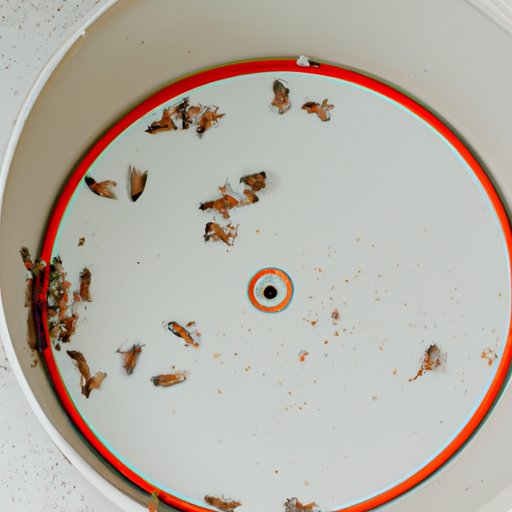How to Get Rid of Drain Flies: Tips and Tricks
Drain flies, also known as moth flies, are a common nuisance in many homes. They are small insects that are often found hovering around drains, sinks, and other damp areas. They breed in standing water and can quickly become a problem if left unchecked. While many people prefer to try to tackle the issue themselves before calling in a professional, it’s important to know what you’re up against. In this article, we’ll explore some DIY remedies, hygiene tips, preventative measures, and when to call in the experts.
What are Drain Flies?
Drain flies are tiny insects that are often mistaken for fruit flies or gnats. They are about 1/8 inch long and have a furry appearance. These insects prefer damp, dark environments and are often found in drains, sinks, and other areas where standing water is present. Drain flies breed in organic debris that accumulates in drainpipes and other moist areas. Female drain flies lay their eggs in the debris and the larvae hatch in about 48 hours. The larvae feed on the organic matter and can grow up to 5 mm long before pupating into adults.
DIY Remedies for Eliminating Drain Flies
If you’re dealing with a drain fly infestation, there are several DIY remedies you can try. The key is to eliminate the breeding sites and remove any standing water. Here are a few suggestions:
- Homemade traps: One effective trap is to mix equal parts sugar, water, and white vinegar in a jar. Cover the jar with plastic wrap and poke a few holes to allow the drain flies to enter but not escape. Another trap can be made by mixing a cup of apple cider vinegar, a tablespoon of sugar, a few drops of dish soap, and water in a jar with a funnel placed on top. The drain flies are attracted to the sweet smell of the vinegar and get trapped in the soapy water below.
- Cleaning products: Use enzyme-based drain cleaners to dissolve organic matter and flush it away. You can also use baking soda and vinegar followed by boiling water to clean your drains. Another option is to use a biodegradable drain gel, which adheres to the pipe walls and eats away at the organic matter that drain flies feed on.
- Remove standing water: Investigate any leaks or excess water sources around your sinks and drains and repair them as soon as possible. Remove any standing water in dishes or sinks to eliminate potential breeding sites.
Hygiene and Preventative Measures
Good hygiene and preventative measures can go a long way in preventing drain fly infestations. Here are some tips to keep your drains clear and your home drain fly-free:
- Keep drains clean: Rinse your drains regularly with hot water to prevent the accumulation of organic matter. Use a drain brush to scrub away any debris that clings to your pipes.
- Use sink strainers: Sink strainers can be placed over your drains to catch food, hair, and other debris before it enters the pipes. These strainers are easy to clean and can help prevent blockages that create breeding sites for drain flies.
- Flush drains periodically: Pour a pot of boiling water down your drains every week to kill any larvae or eggs that might be present.
Interview with an Exterminator or Pest Control Expert
If your DIY efforts aren’t successful, it’s time to consider calling in a professional. We interviewed John, an exterminator with 10 years of experience in dealing with drain flies. He recommended calling in an expert when the problem persists despite your DIY efforts, or if the infestation is severe.
John also mentioned that pest control experts use a variety of methods to eliminate infestations, including pesticides, steam treatments, and fogging. These methods are more effective than DIY remedies and can quickly eliminate drain flies and their larvae. Pest control experts can also offer advice on how to prevent future infestations and can provide regular treatments to keep your home free of pests.
Visual Guide
Check out the images below for more guidance on how to effectively get rid of drain flies:
Image 1: Trap using apple cider vinegar

Image 2: Scrubbing drains with a brush

Conclusion
Drain flies can be a frustrating problem, but with the right tips and tricks, you can eliminate infestations and prevent them from returning. Remember to take a holistic approach to the problem by removing breeding sites, practicing good hygiene and preventative measures, and calling in a professional if DIY methods are unsuccessful.
